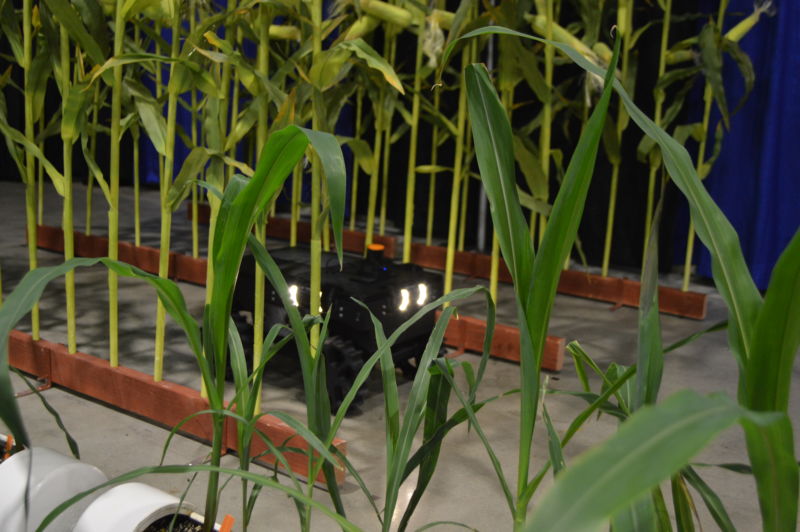Hyper-efficient gas engines, next-gen wind turbines, and more early-stage wonders

NATIONAL HARBOR, MD—Last week’s ARPA-E summit was full of big ideas about the future of energy, and nowhere was that more evident than on the summit’s show floor. In the basement of the sprawling Gaylord Hotel and Convention Center, dozens of academic institutions and companies set up booths to show off what they had been working on with their grant money.
From cars to recycling to electricity-generating turbines to biofuels, the warehouse temporarily turned into a montage of early-stage ideas. Most importantly, it also showed off the breadth of ARPA-E’s work: though the Department of Energy’s early-stage grant program has at times been cast as an accelerator for renewable energy exclusively, ARPA-E projects span a variety of fuels and even include some non-energy projects whose application could save industry a significant amount of energy.
Flip through the gallery below to see what we mean.
-
This is a 4kW prototype turbine generator unit from Ocean Renewable Power Company (ORPC). The company has made very large turbines for preliminary projects in Alaska and Maine. ORPC is looking to add active pitch control to this turbine, which, when paired with a motor, could increase the efficiency of the turbine or event help the turbine drive itself to a remote location in a river or on a sea bed.Megan Geuss
-
The advantage of tidal power is that it’s very reliable, unlike wind and solar power. You can predict tides 20 years out, generally the lifespan of the equipment.Megan Geuss
-
A generator would generally be attached to the turbine, but it’s not included here.Megan Geuss
-
One featured ARPA-E-funded technology was the opposed-piston gasoline compression ignition engine. This Ford F-150 was tricked out with just such an engine, which maker Achates says is 50 percent more efficient than a traditional gas combustion engine.Megan Geuss
-
Achates has already demonstrated that it could build an opposed-piston diesel compression engine, but the ARPA-E grant allowed the company to build such an engine for gasoline.Megan Geuss
-
One ARPA-E grant recipient was a multi-institutional group called SUMR for Segmented Ultralight Morphing Rotor. The group is designing a turbine for extreme scales (50 MW turbines, for example). SUMR’s design will allow rotor blades to “go with the flow” of high winds.Megan Geuss
-
SUMR’s segmented blade prototypes would also allow huge turbines to be built more cost-effectively.Megan Geuss
-
UVH Technologies brought a scrap metal sorter to the show floor. This sorter uses X-rays to identify specific alloy compositions, which can result in cheaper recyclable material and reduce the need for energy-intense primary material fabrication.Megan Geuss
-
Throw all your bits of scrap on the conveyor belt and this machine will sort it out for you.
-
“The Redox Cube” consists of solid oxide fuel cells, which convert natural gas or propane into electrical power (PDF).
-
Another group called WEST (Water Efficient Sorghum Technologies) showed off their progress trying to genetically engineer crops for biofuel that would grow with minimal water input.Megan Geuss
-
A company called EarthSense demoed its autonomous crop monitoring vehicle in a tiny corner of the conference hall. Using this little guy to monitor thousands of acres of biofuel crops (or any other crops) could help farmers make more targeted decisions about how to manage irrigation or invasive species defense.
-
Metis Design has been working with Lawrence Berkeley National Labs to develop a 1 kW residential microturbine. A small combined heat and power system in a residential home could reduce inefficiencies associated with electricity loss that we see on big centralized grids today.Megan Geuss
-
A larger turbine, also from Metis Design.
https://arstechnica.com/?p=1277633